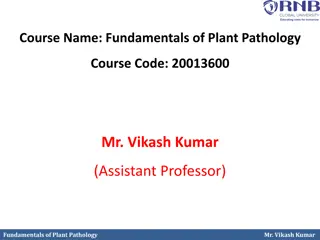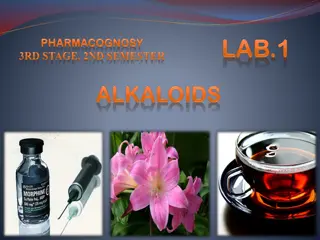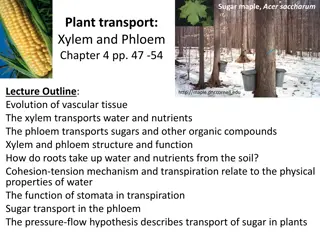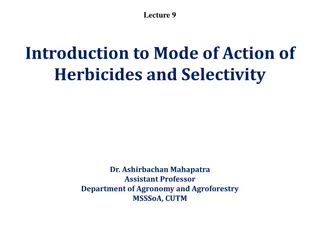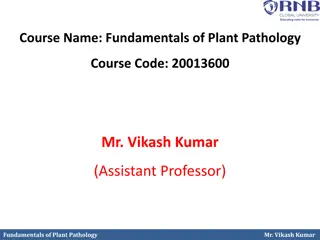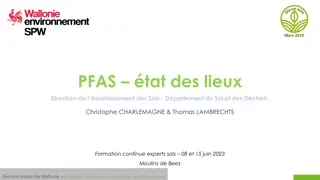Plant Classification and Nomenclature Explained
Understanding plant classification through taxonomy, identification, and naming processes. Learn about the botanical structures such as roots, venation patterns, flowers, and vascular bundles. Explore the principles of binomial nomenclature, genus, and species differentiation. Discover the diverse systems of plant classification in botany.
Download Presentation
Please find below an Image/Link to download the presentation.
The content on the website is provided AS IS for your information and personal use only. It may not be sold, licensed, or shared on other websites without obtaining consent from the author. Download presentation by click this link. If you encounter any issues during the download, it is possible that the publisher has removed the file from their server.
Presentation Transcript
Primary root disappear giving rise to fibrous root system
identification and naming of plants and classification into different groups according to their resemblance and differences mainly in morphological characteristics.
very close resemblance with one another, structurally and functionally. They interbreed freely and successfully have same number of chromosomes in zn (somatic) and n (gametes) cells.
Genus: collection of species which bear a close resemblance to one another as far as the morphological characteristics of the flora in reproductive plants are concerned.
The first refers to the genus and the second to the species. This method of giving two names to a living organism is called Binomial system of nomenclature.
capital letter. Each is underlined/italicized. They are not underlined when in italics. There are so many systems of classification that have been used in botany today.
smaller than bacterial. All viruses are entirely parasitic and are quite inert in their free state in air or water. They grow, multiply and produce disease symptom in the living cells of plants and animals.
They are complex organisms with genetic mechanism. They are of varying shapes (10-200mm). a virus structure contains a core of nucleic acid, (mostly DNA and sometimes RNA) surrounded by a thin film of protein (protein coat) with a protective layer.
particle (also called a virion) gains access to the interior of a specific host, it has the capacity to direct its own replication. The viral nucleic acid which is the infective part of a virion, can monopolize the biosynthetic machinery of a host cell, forcing it to synthesize the molecular component of virus molecules rather than the normal host cell components.
All plans viruses contain RNA and are either nod like relics.
spot of cabbage, (c) leaf roll of potatoes (d) chlorotic diseases in apple, pepper, rose (e) leaf curl in bean, beef, cotton, pawpaw, soyabean, tobacco (f) necrosis in potato, tomato. Some vital diseases in animal include (a) AIDS (b) mumps, small pox, chicken pox, measles, herpes, polio, yellow fever (Hepatitis B), common cold, influenza, etc.
Bacterial and structural organization of prokaryotic cells
membraneous organelles such as mitochondria or endosplasmic reticulum. The prokaryotes include the bacteria, blue-green algae etc. They contain only one chromosome, which consists of a single molecule of double helical DNA densely coiled in the nuclear zone.
throughout the cell and contains many small vacuoles, food granules (glycogen and volutin). There is no organized nucleus but a nuclear material in front of a coiled double stranded DNA. They reproduce by fission. Shapes of bacteria include the Bacilli (rod), cocci (spherical), spirilla (spiral), commas (vibrio).
Agriculture Decay of organic materials Nitrification Nitrogen fixation Fertilizers Plant disease control through antibiotics from some plant organism
Conversion of hide to leather during tanning
Non-harmful bacteria in human intestine
Any member in Thallophyta, Bryophyta or pteridophyta may take to one or more of the three methods of reproduction i.e. (a) Vegetative (b) Asexual (c) Sexual
Vegetative reproduction is by cell division or fragmentation of part of the plant body.










